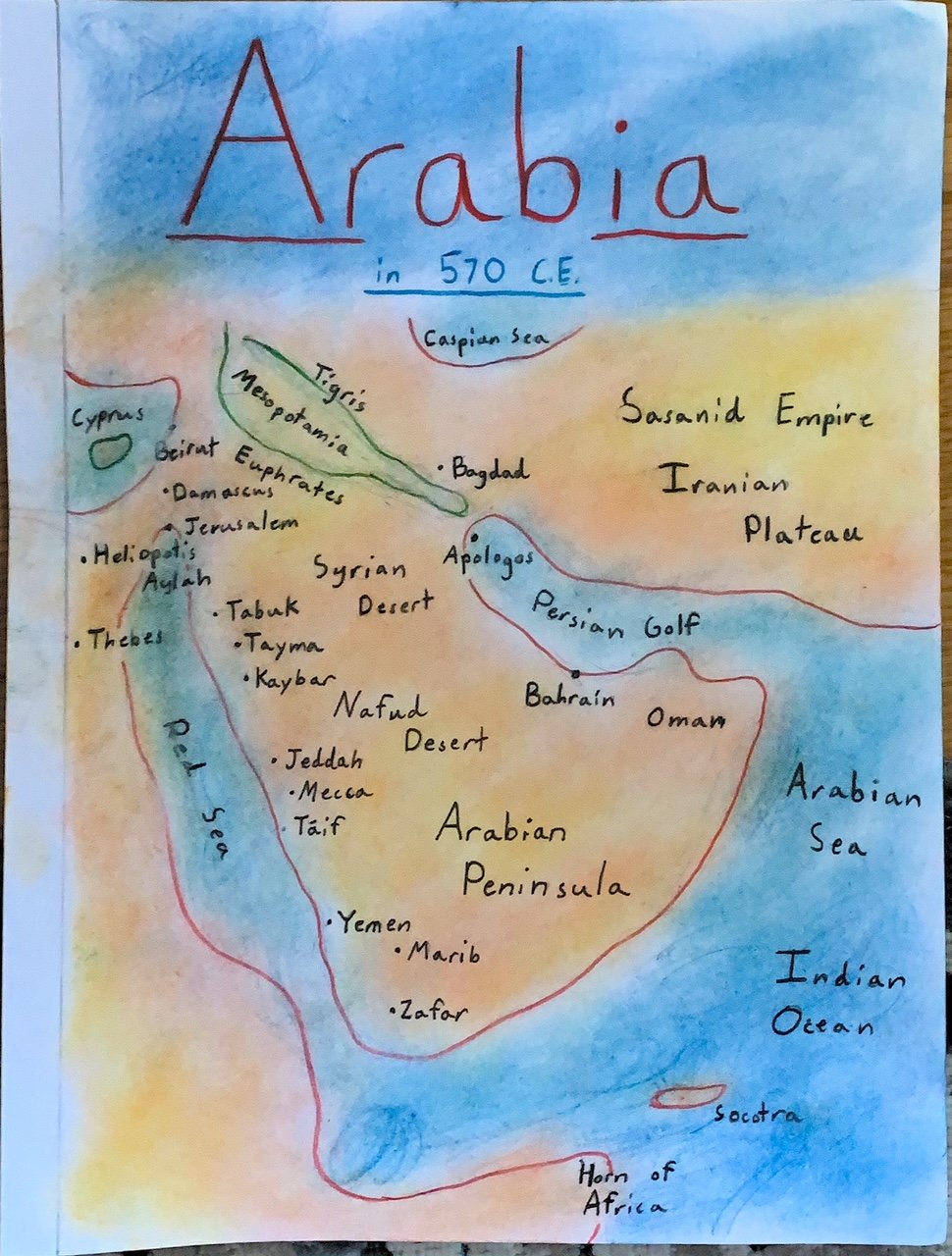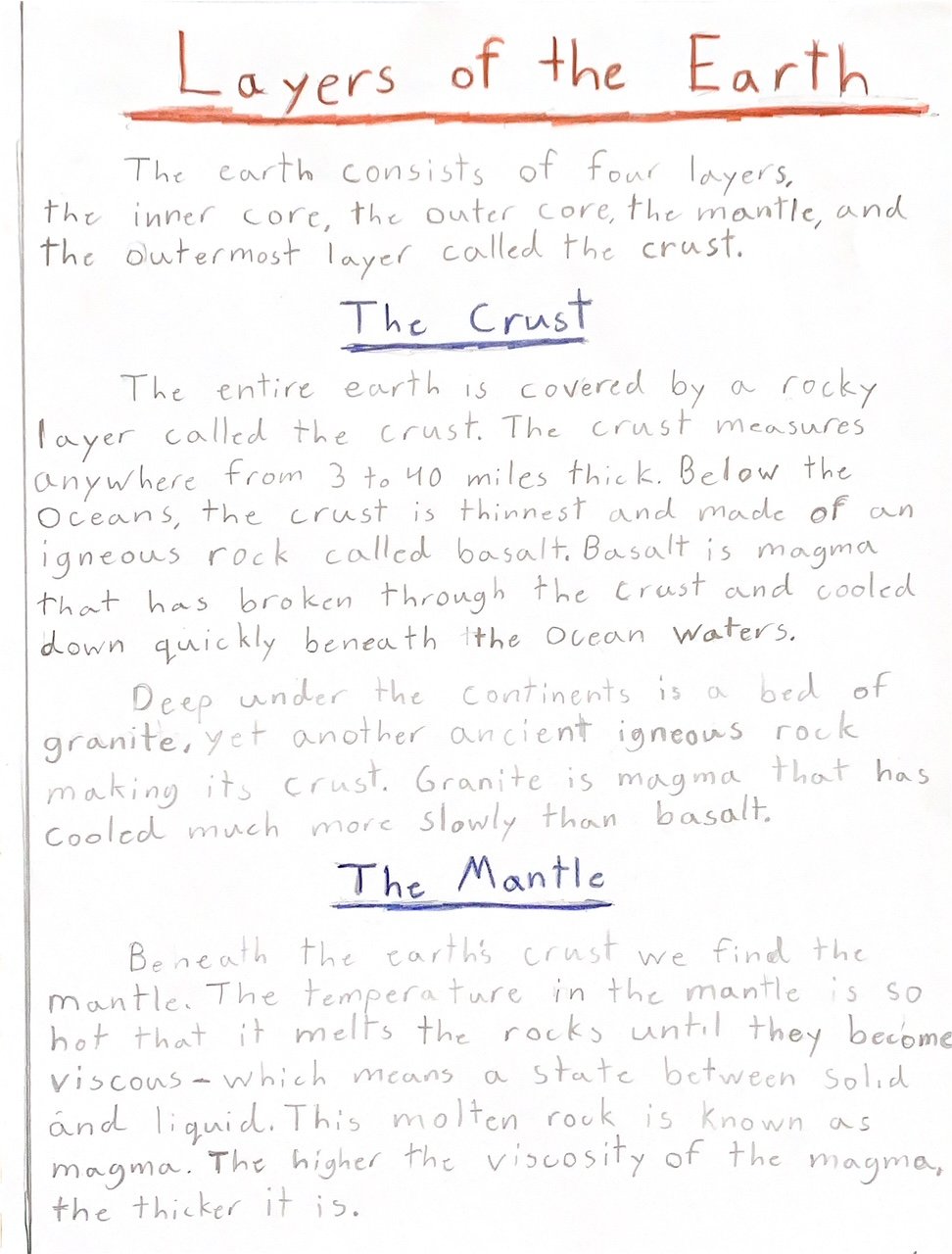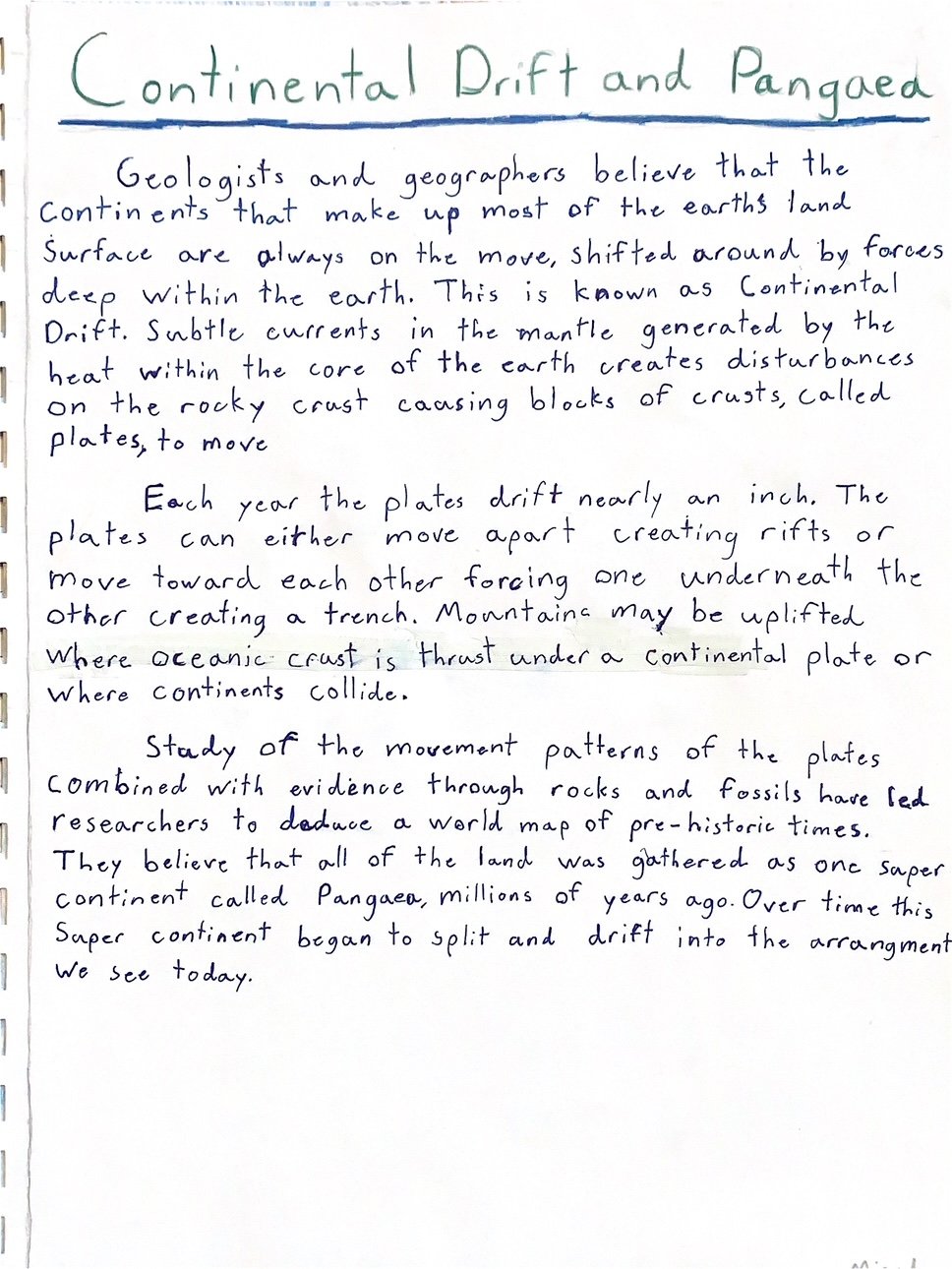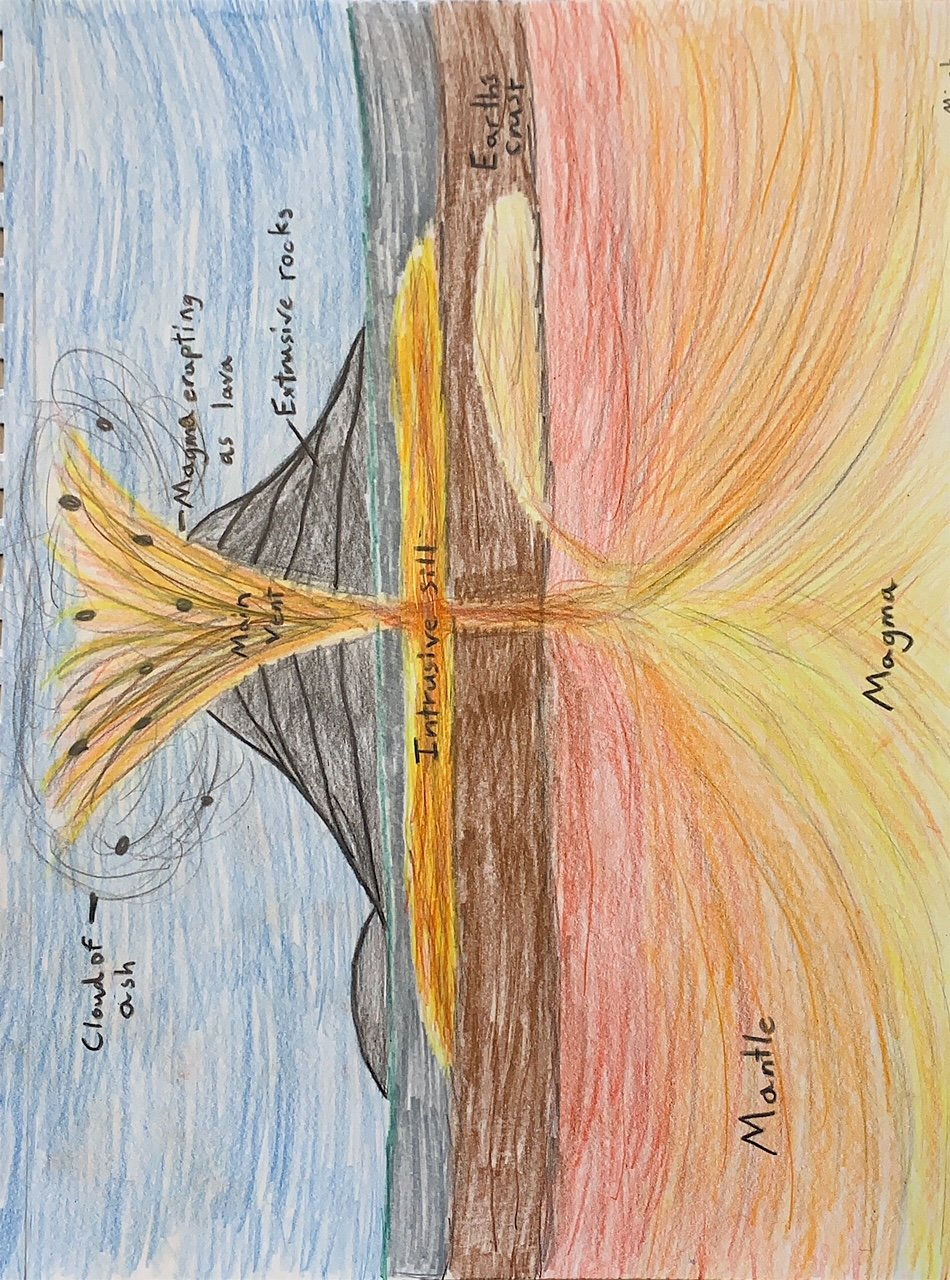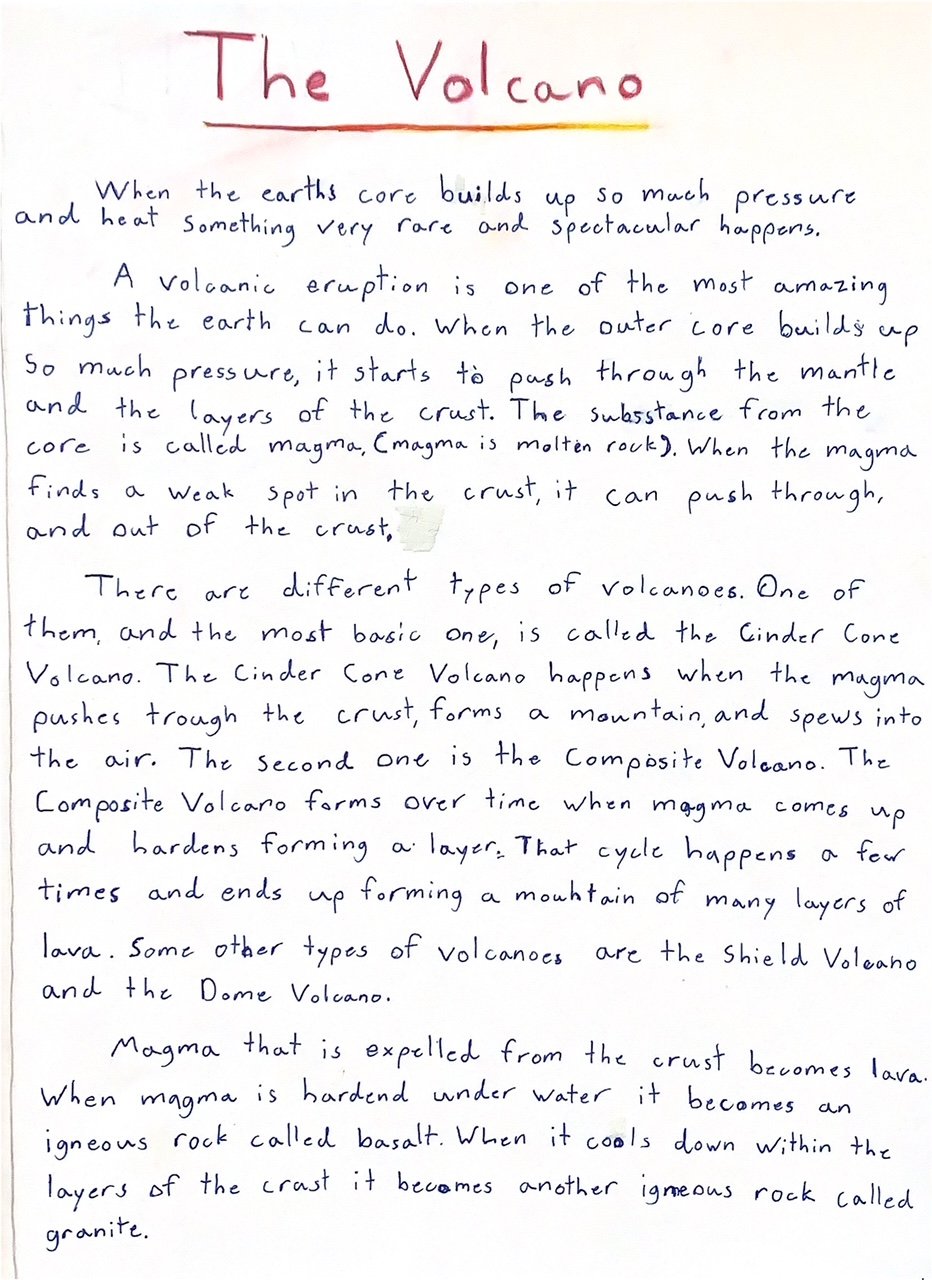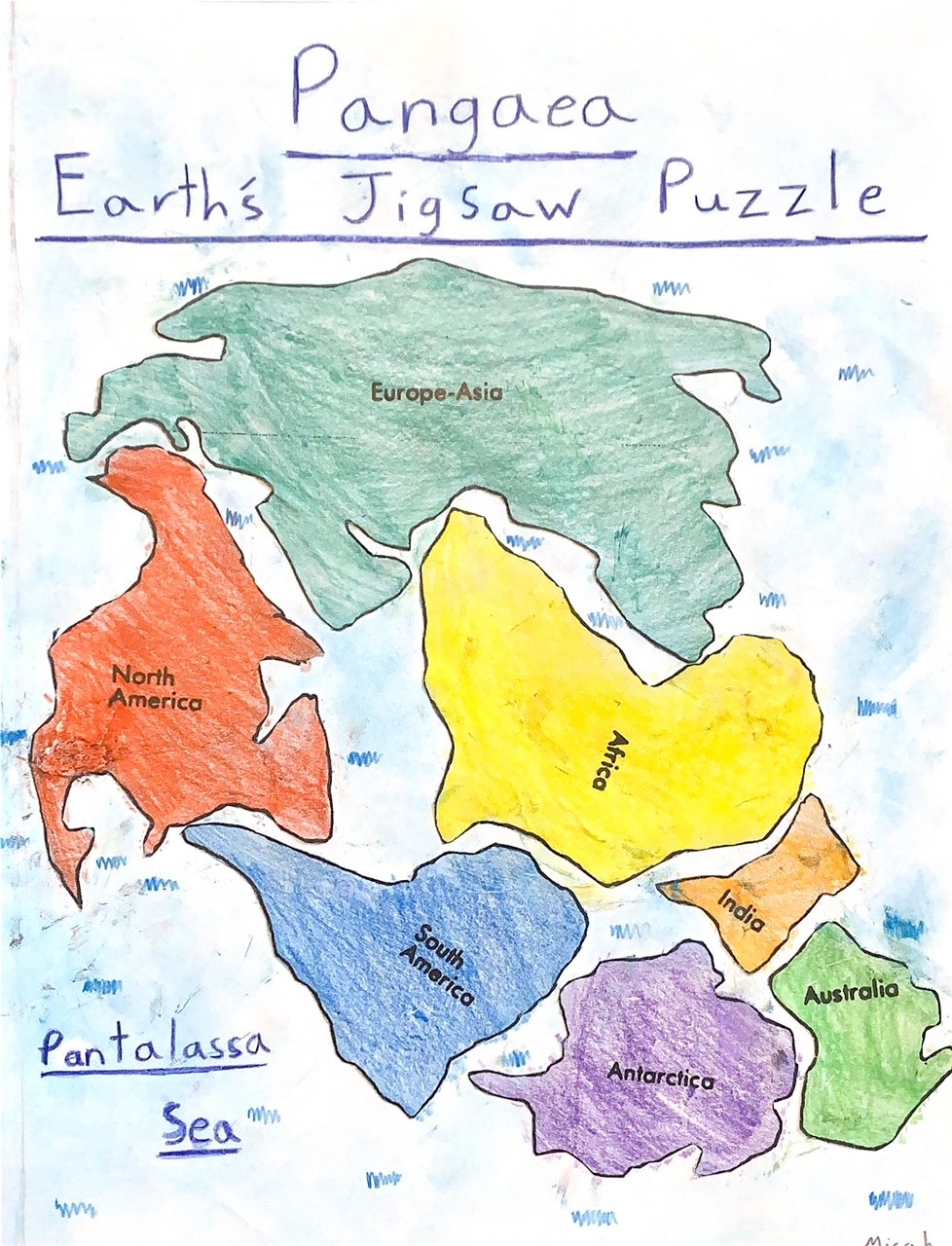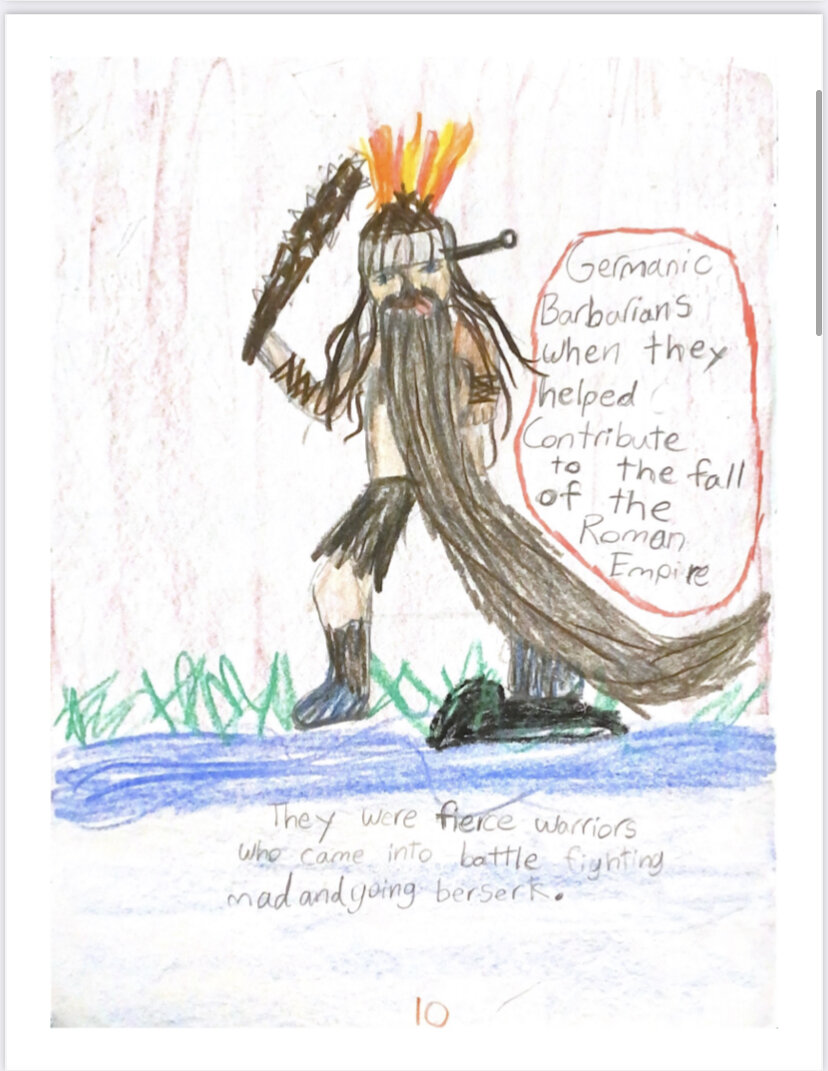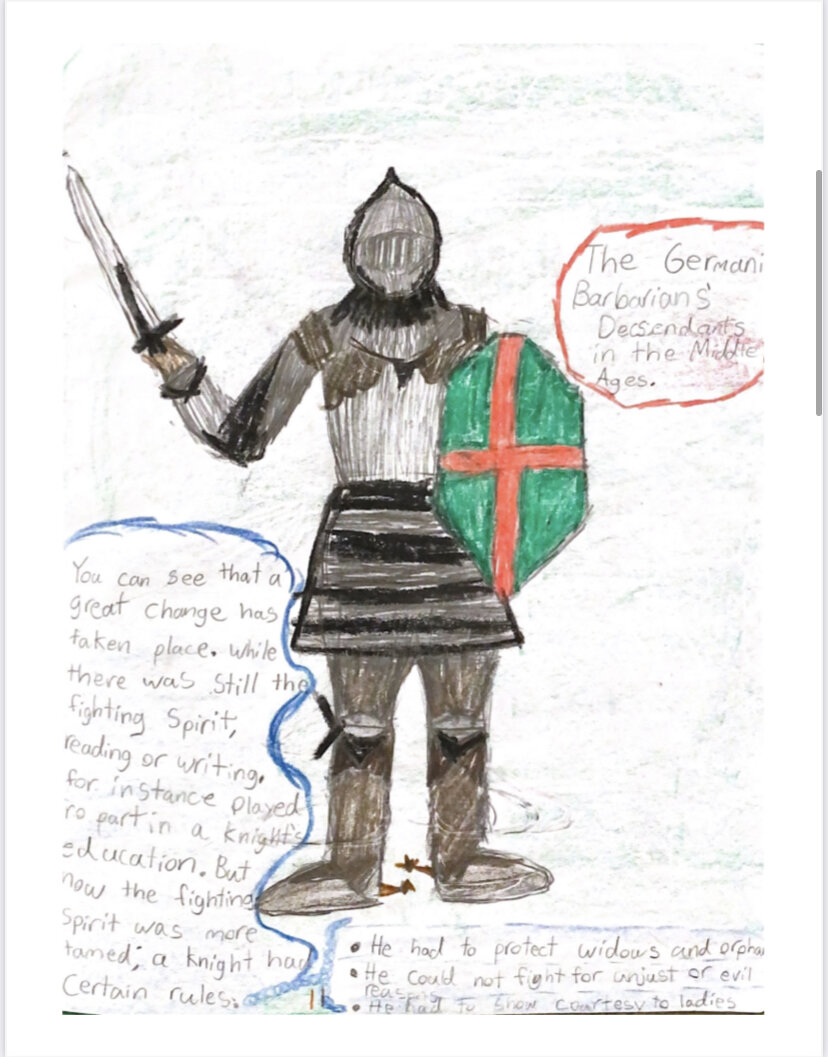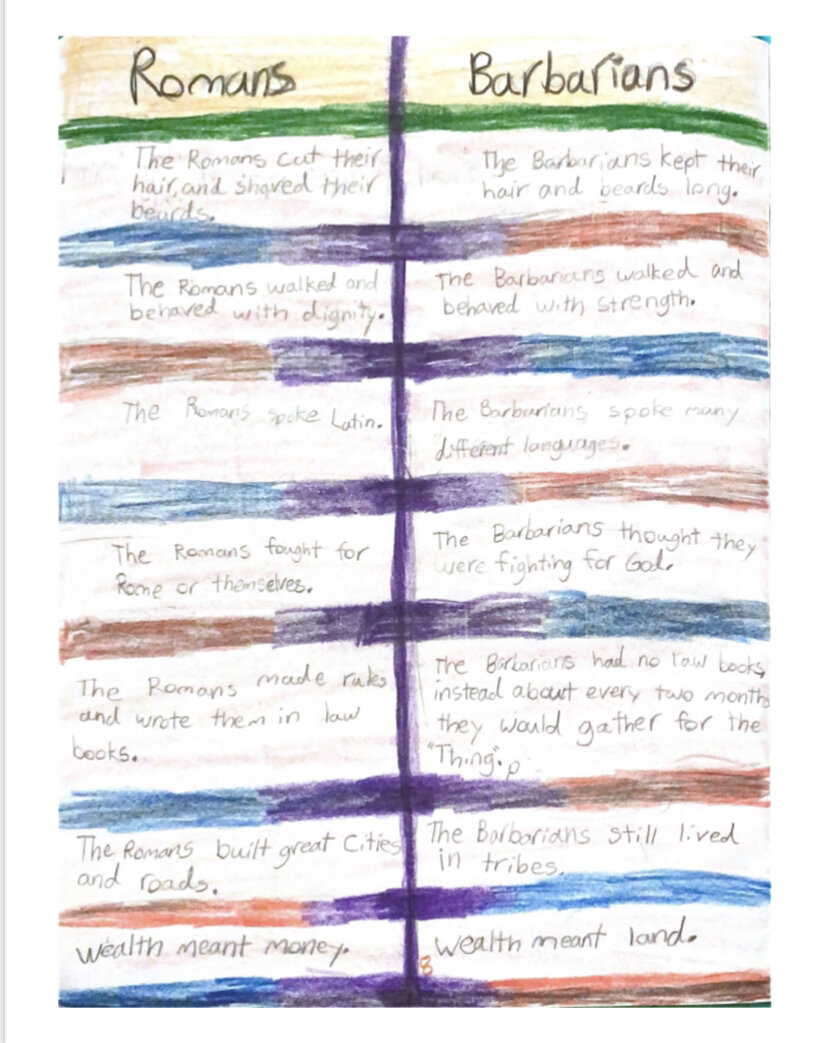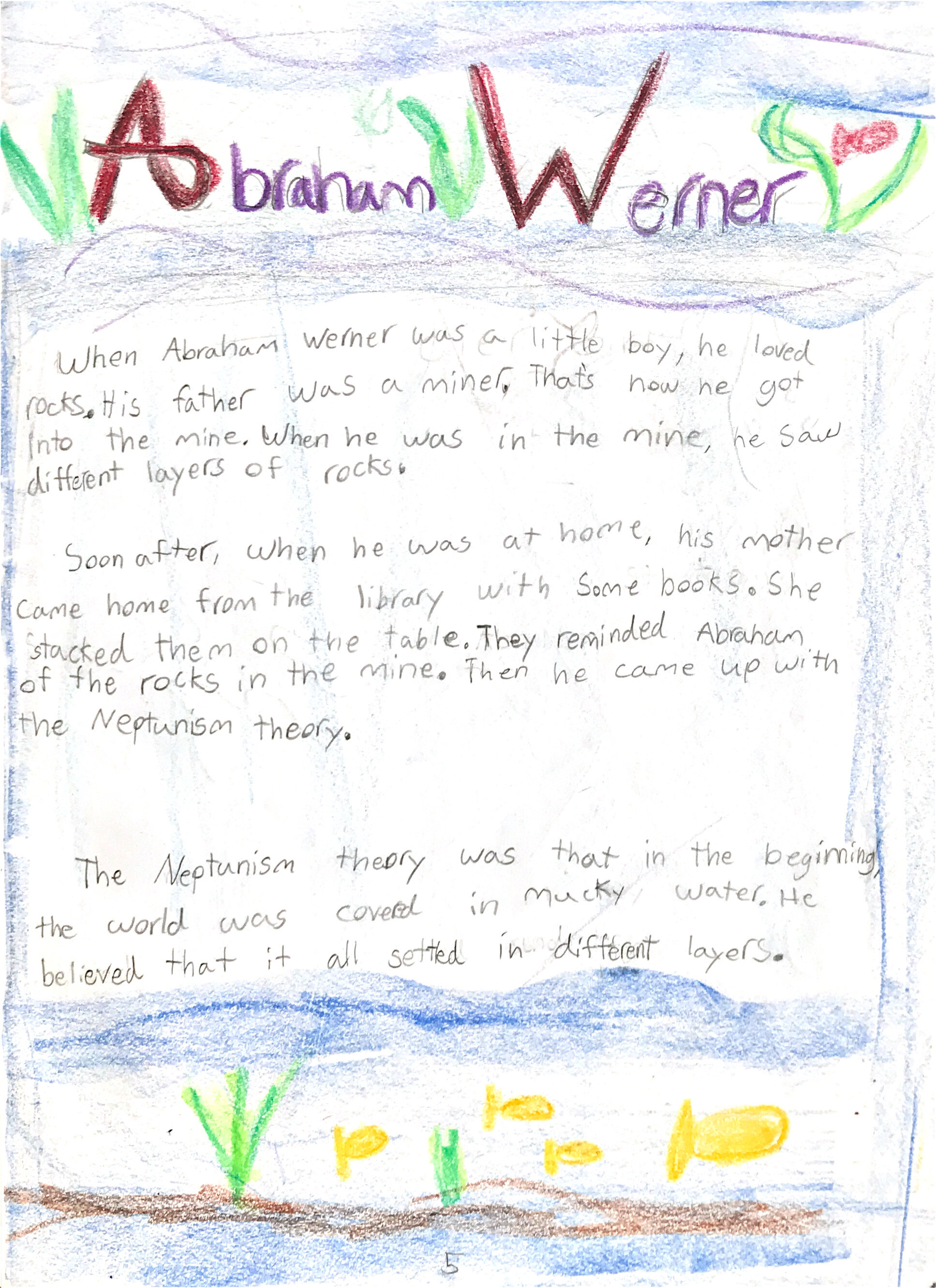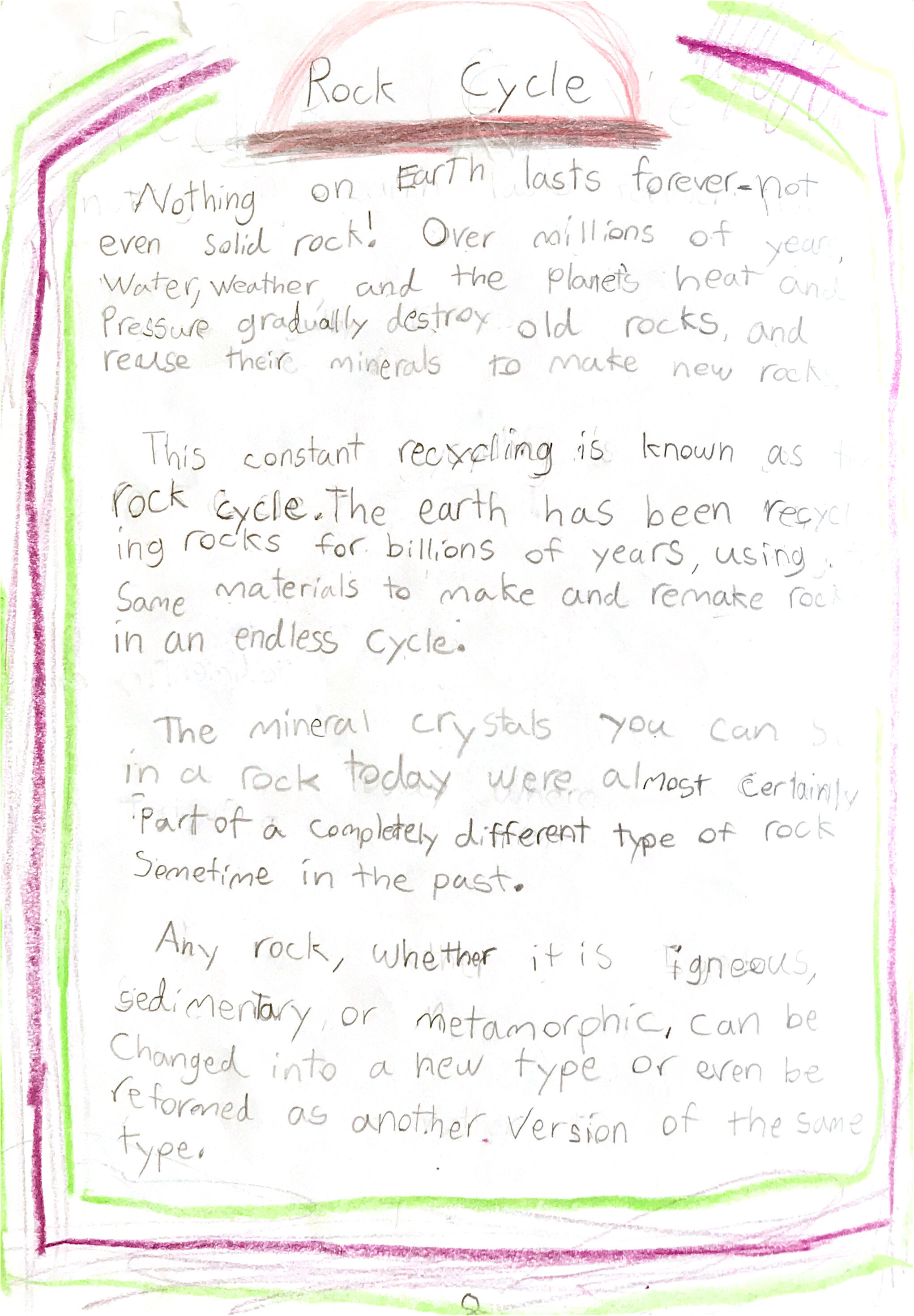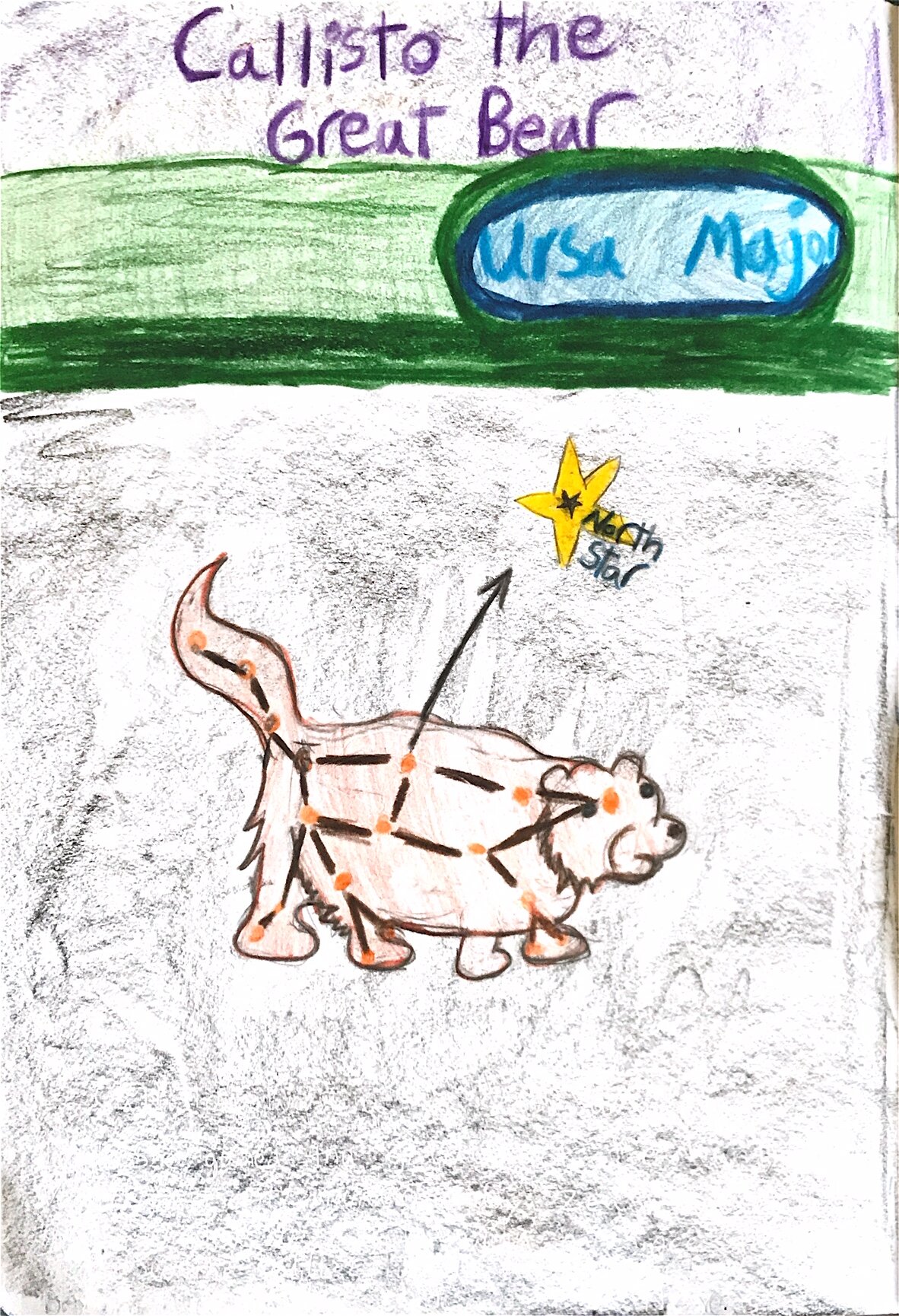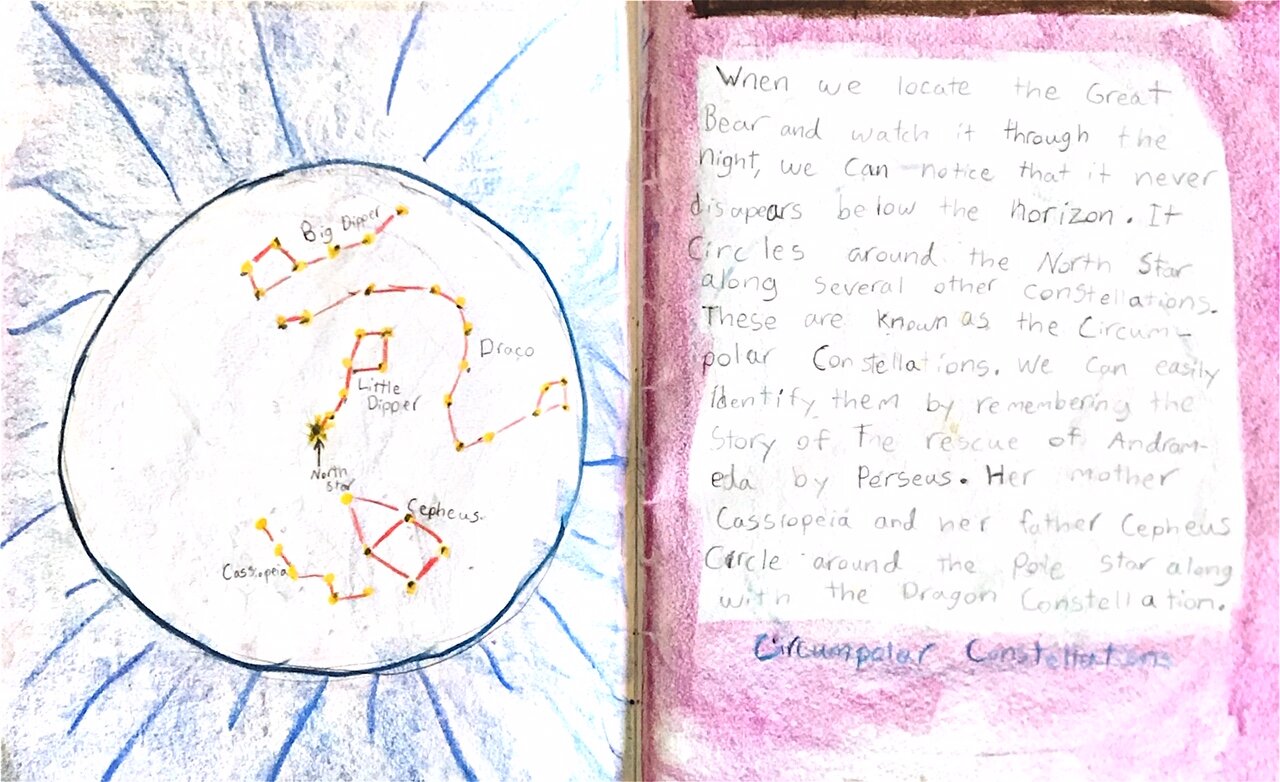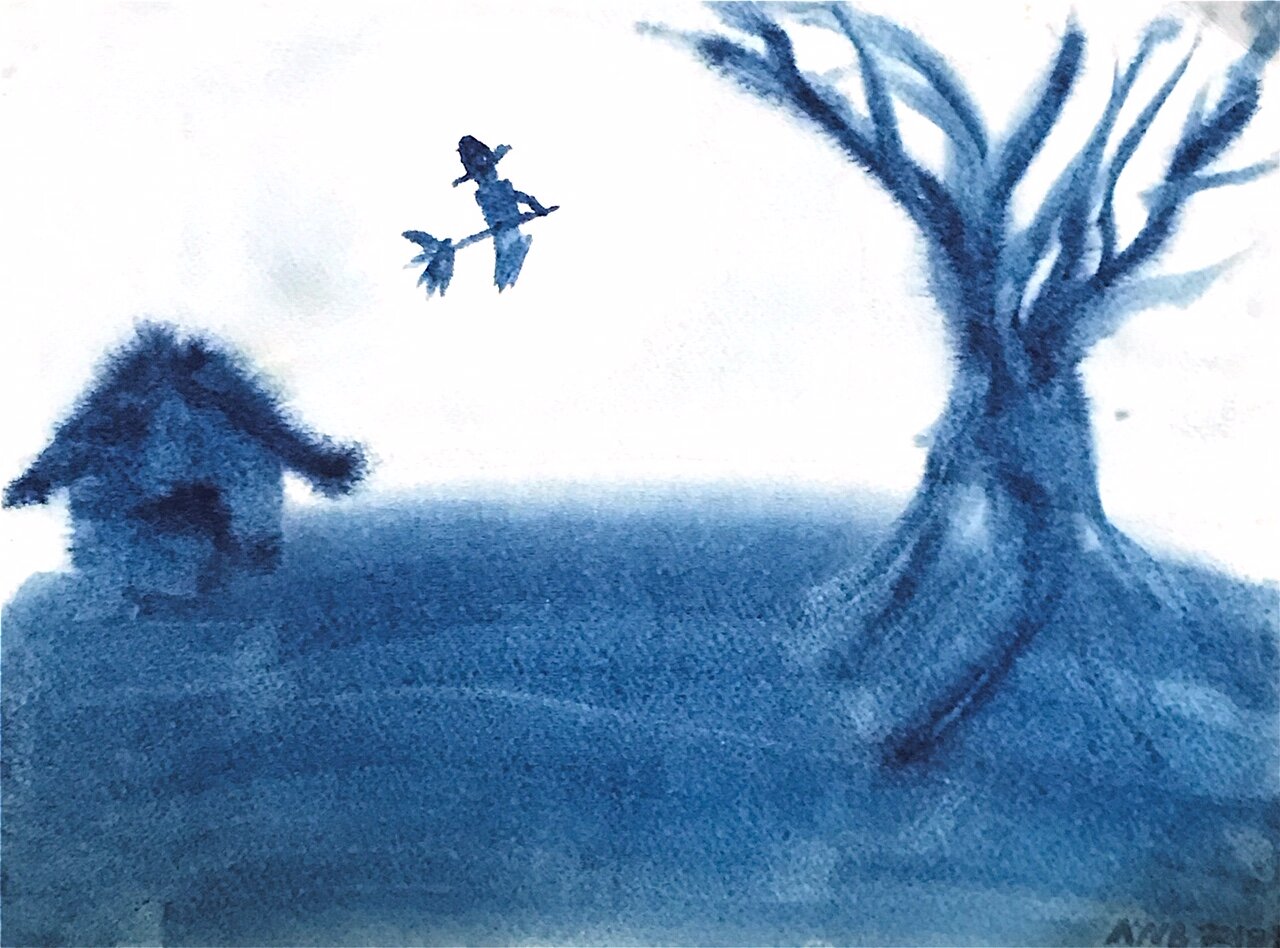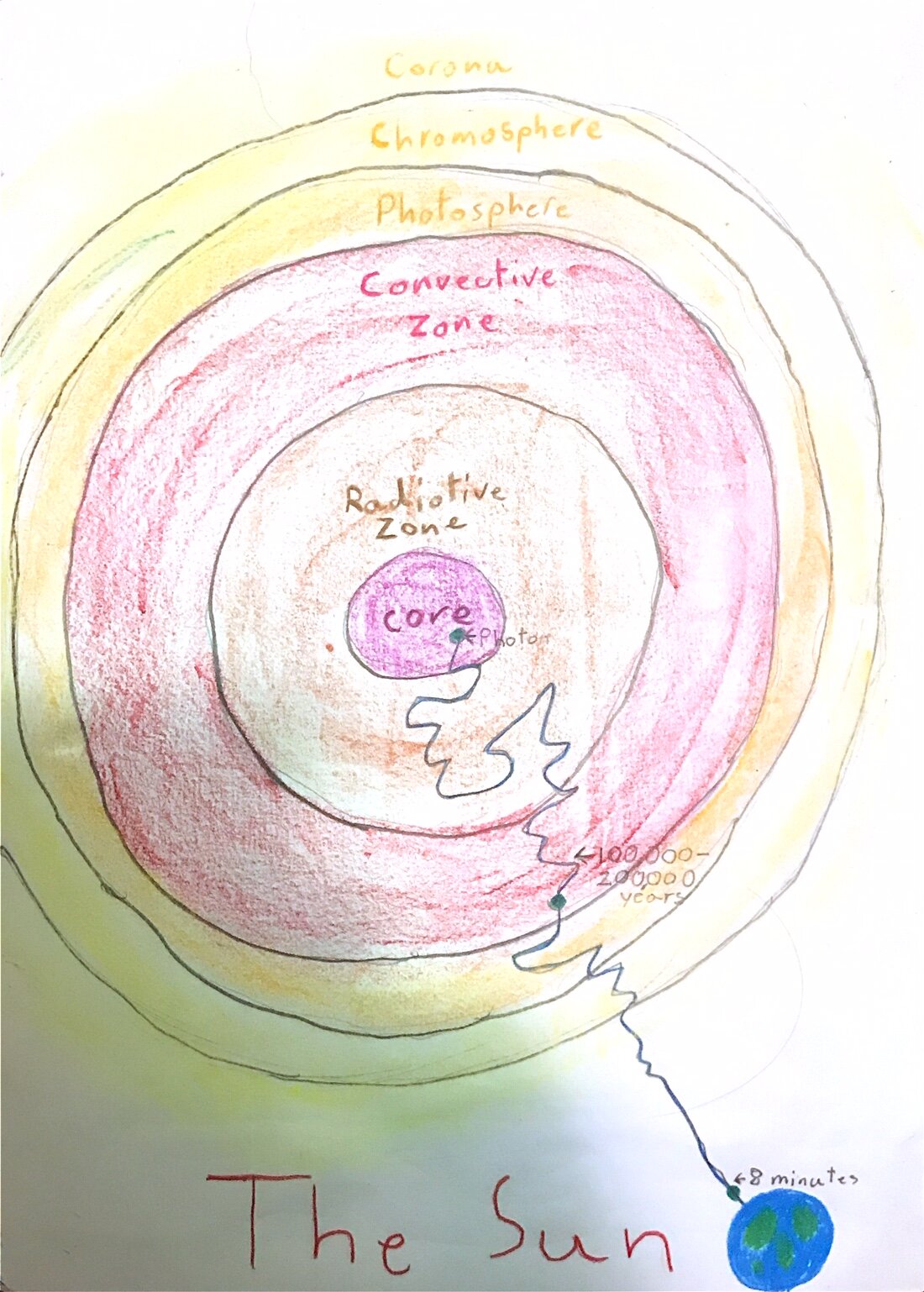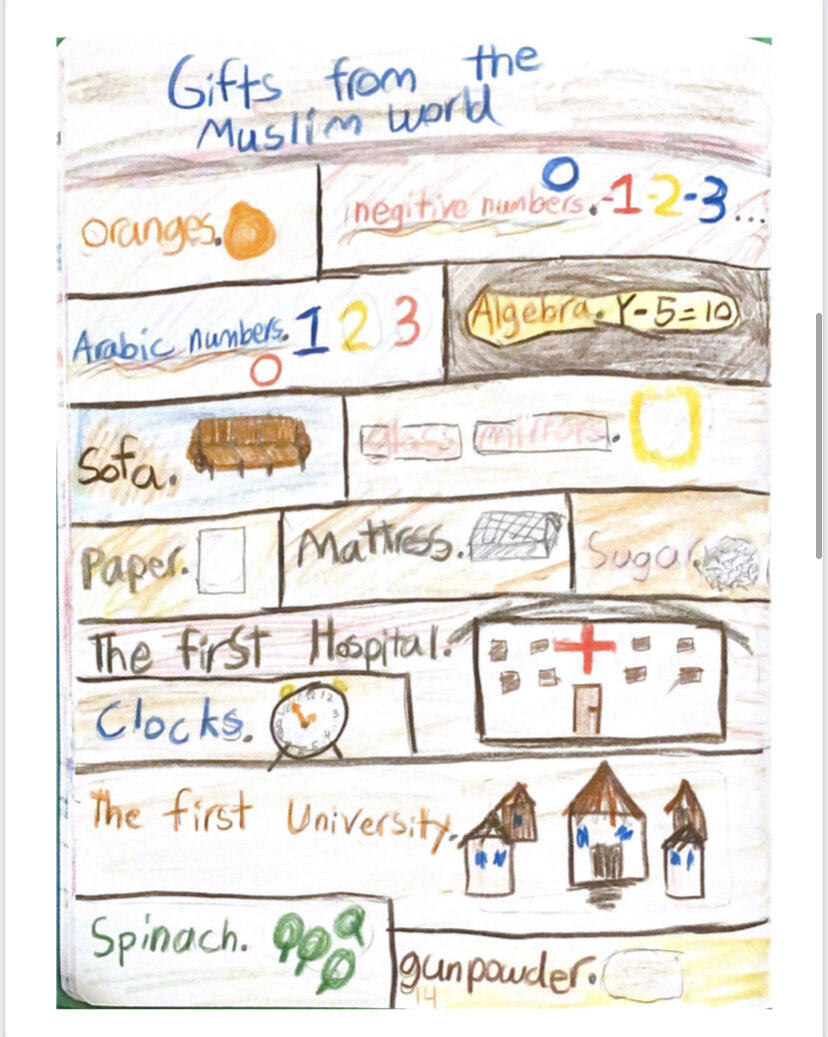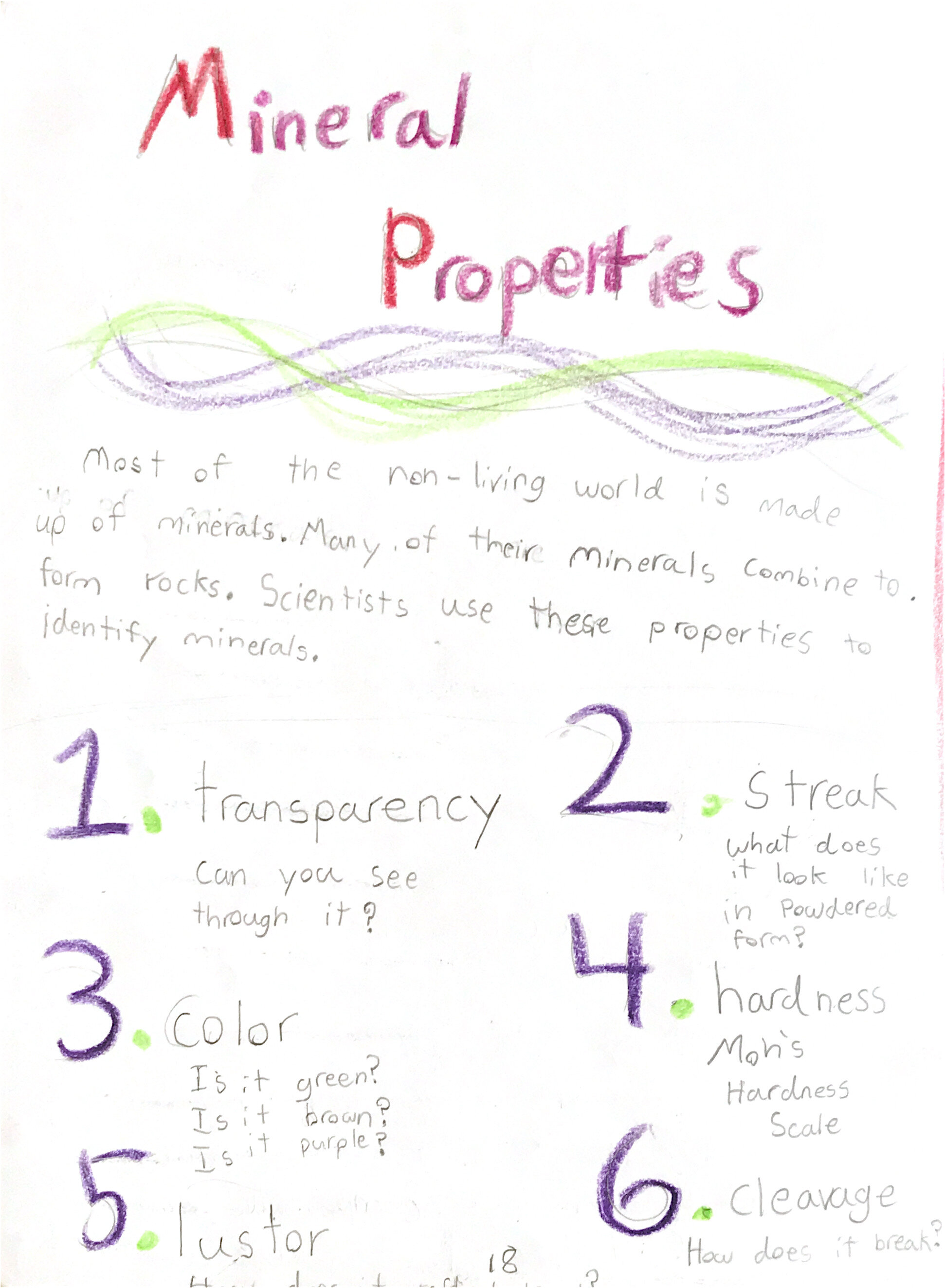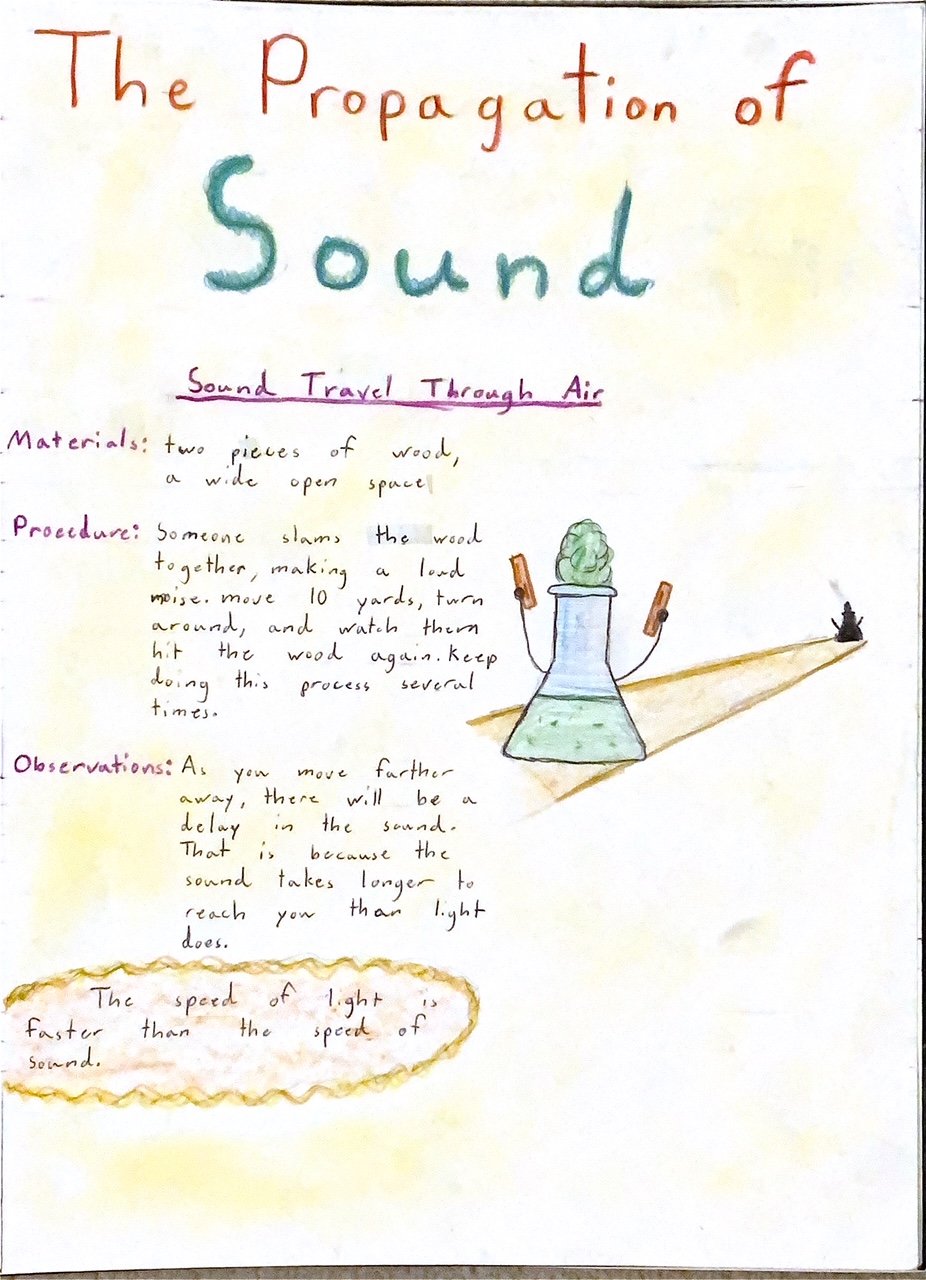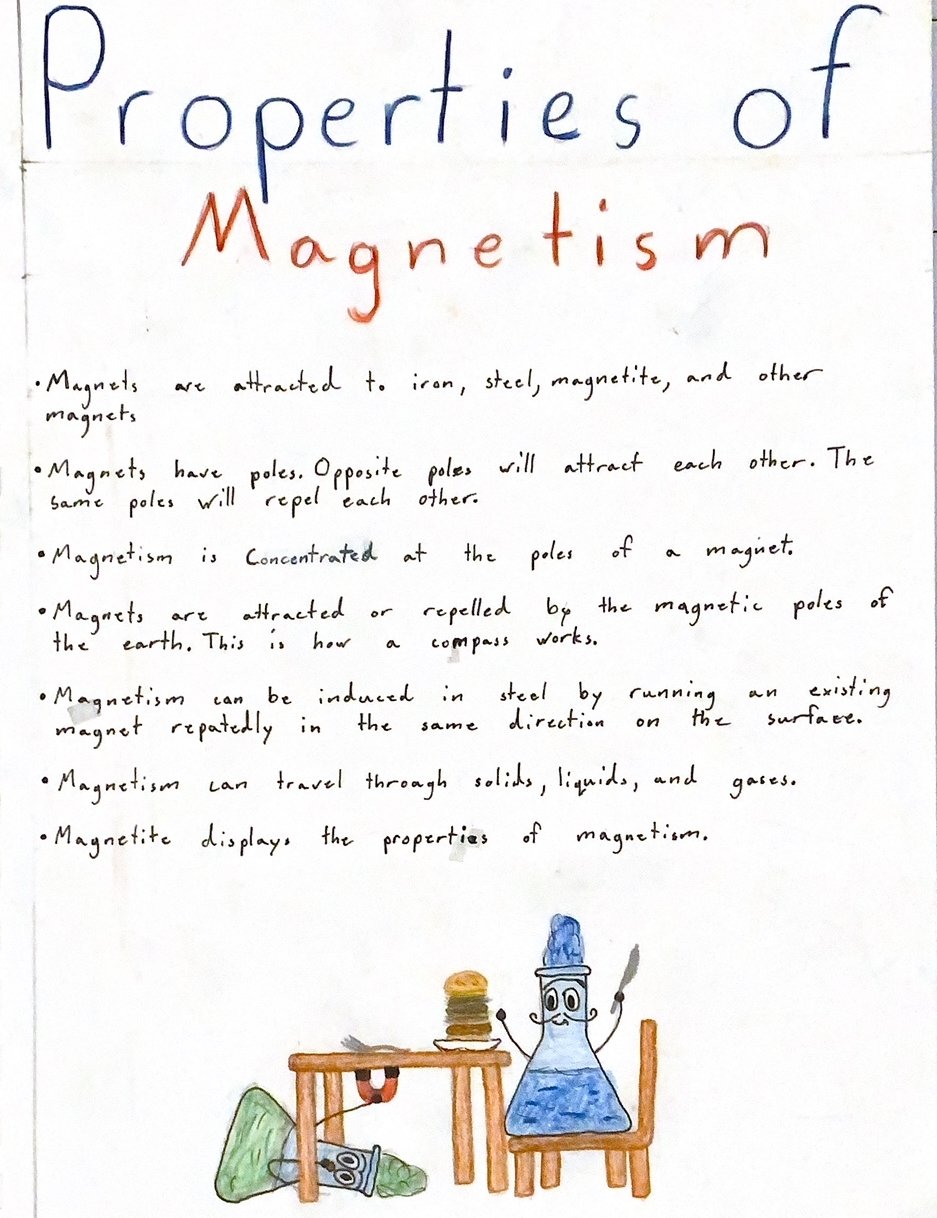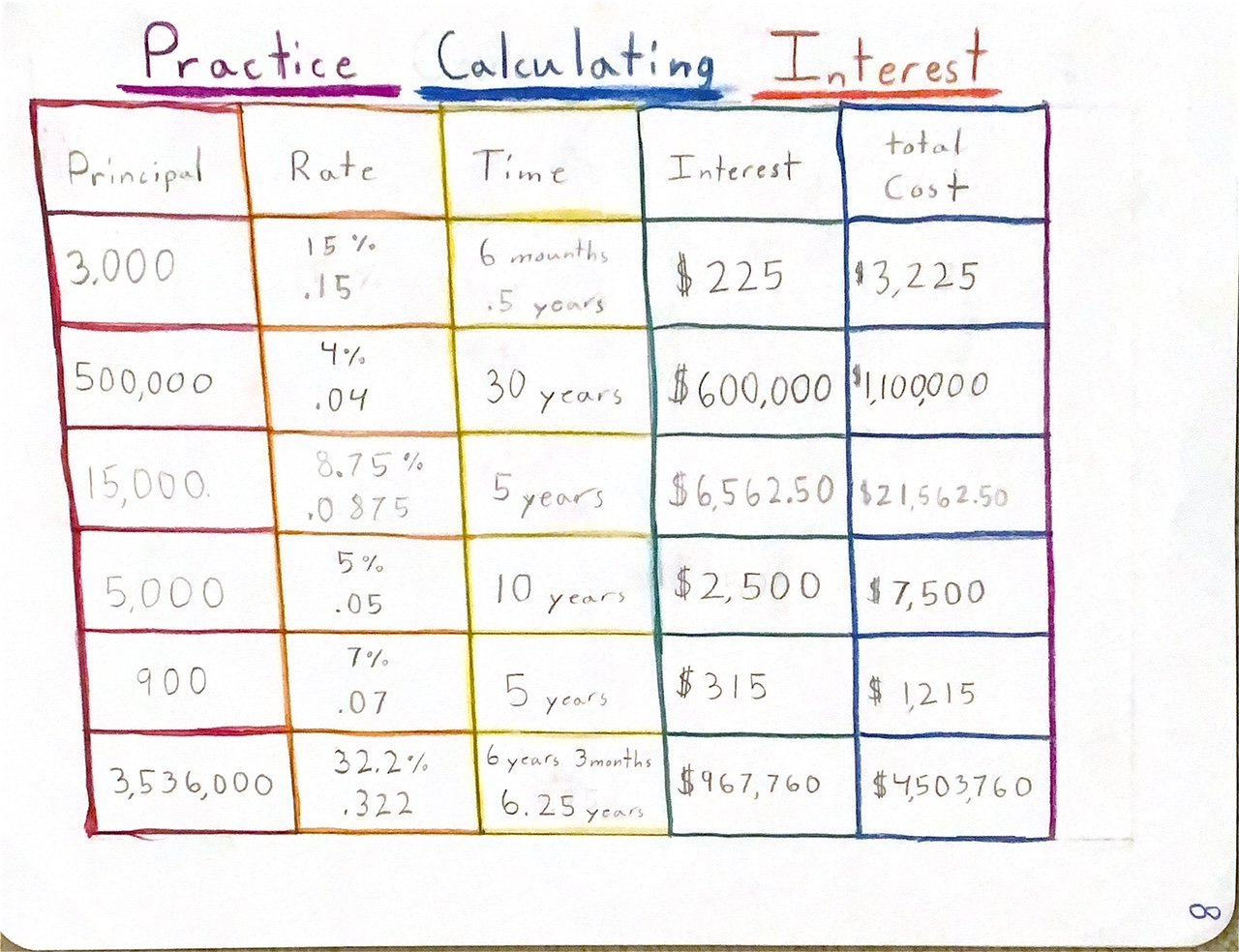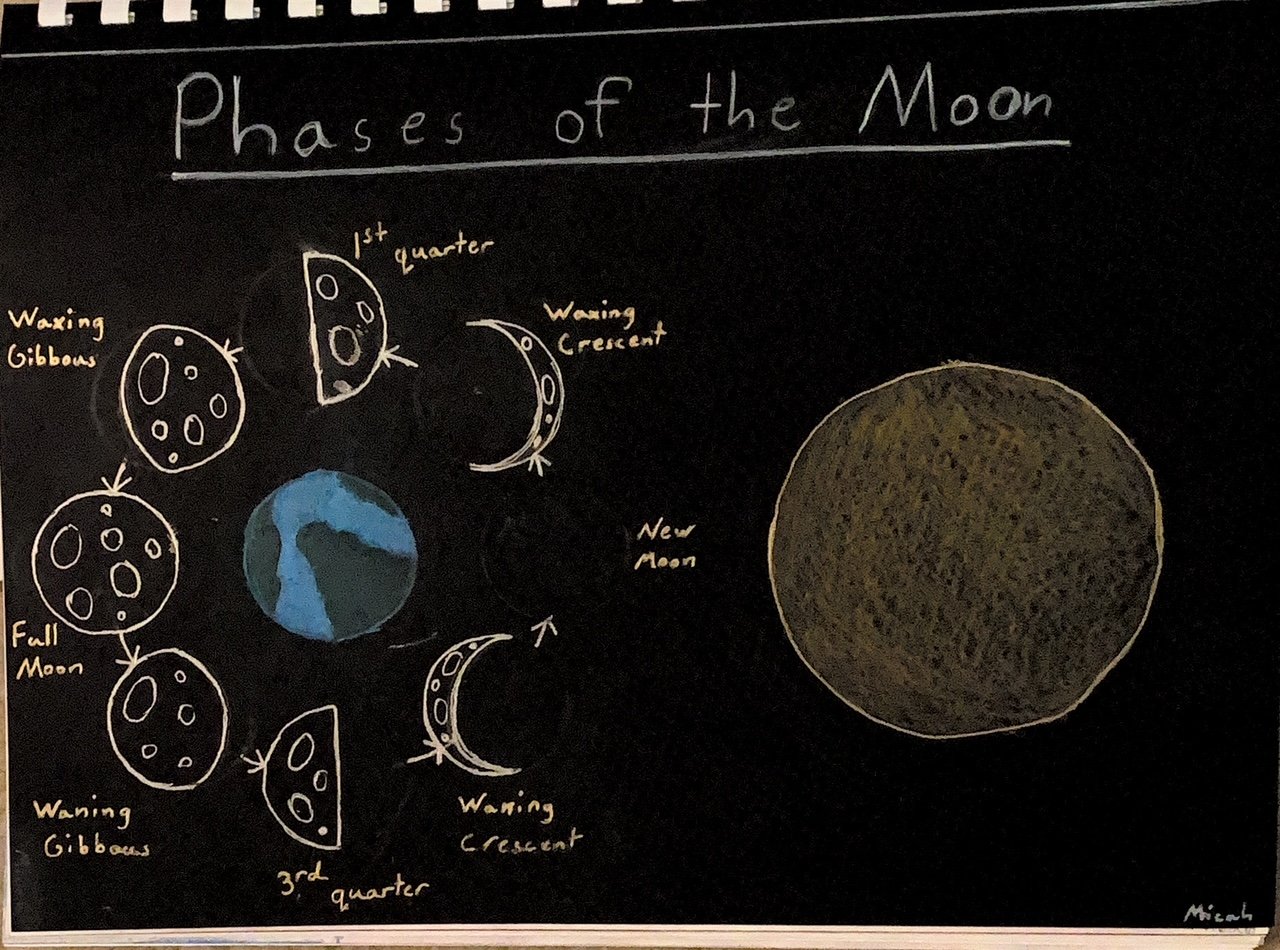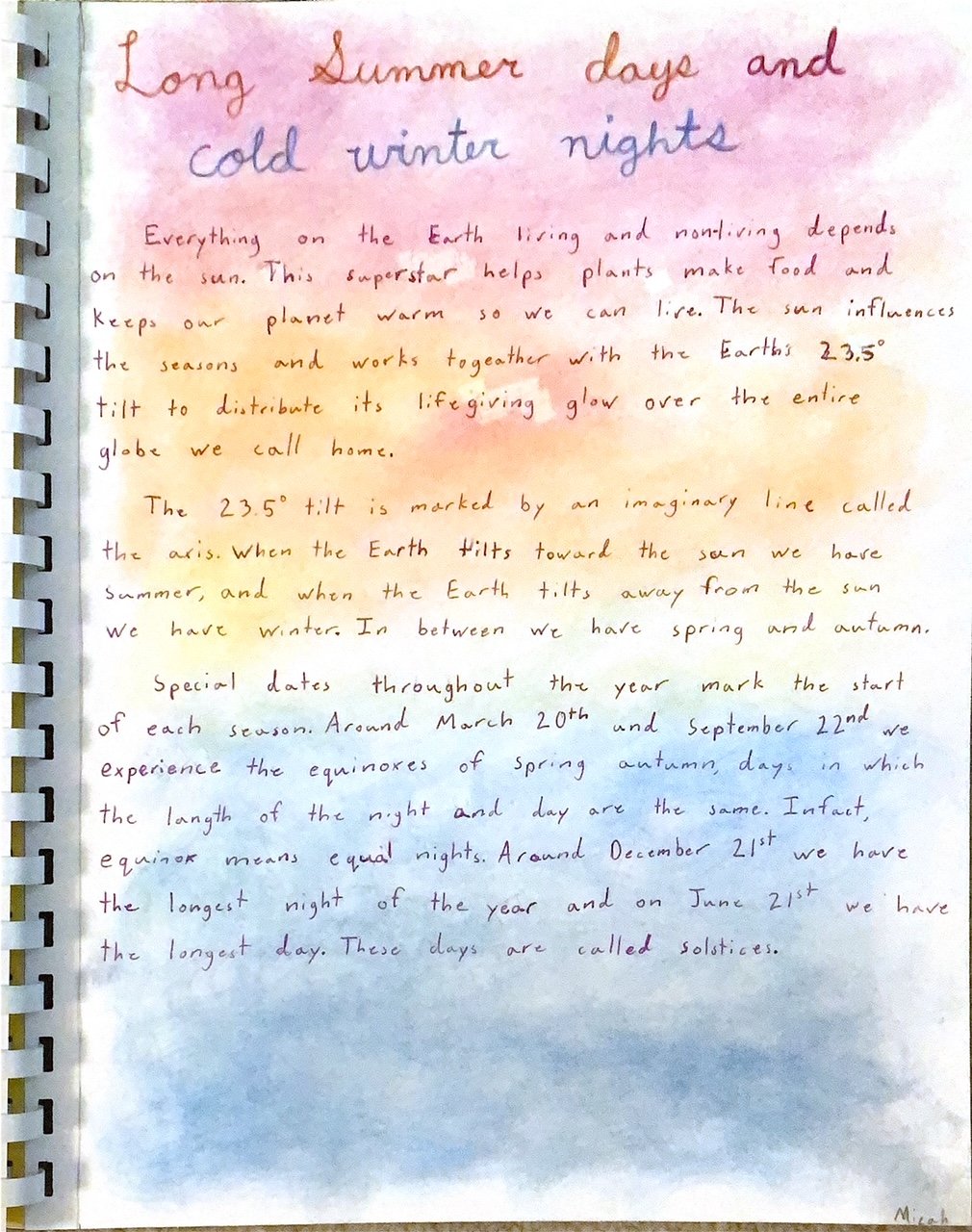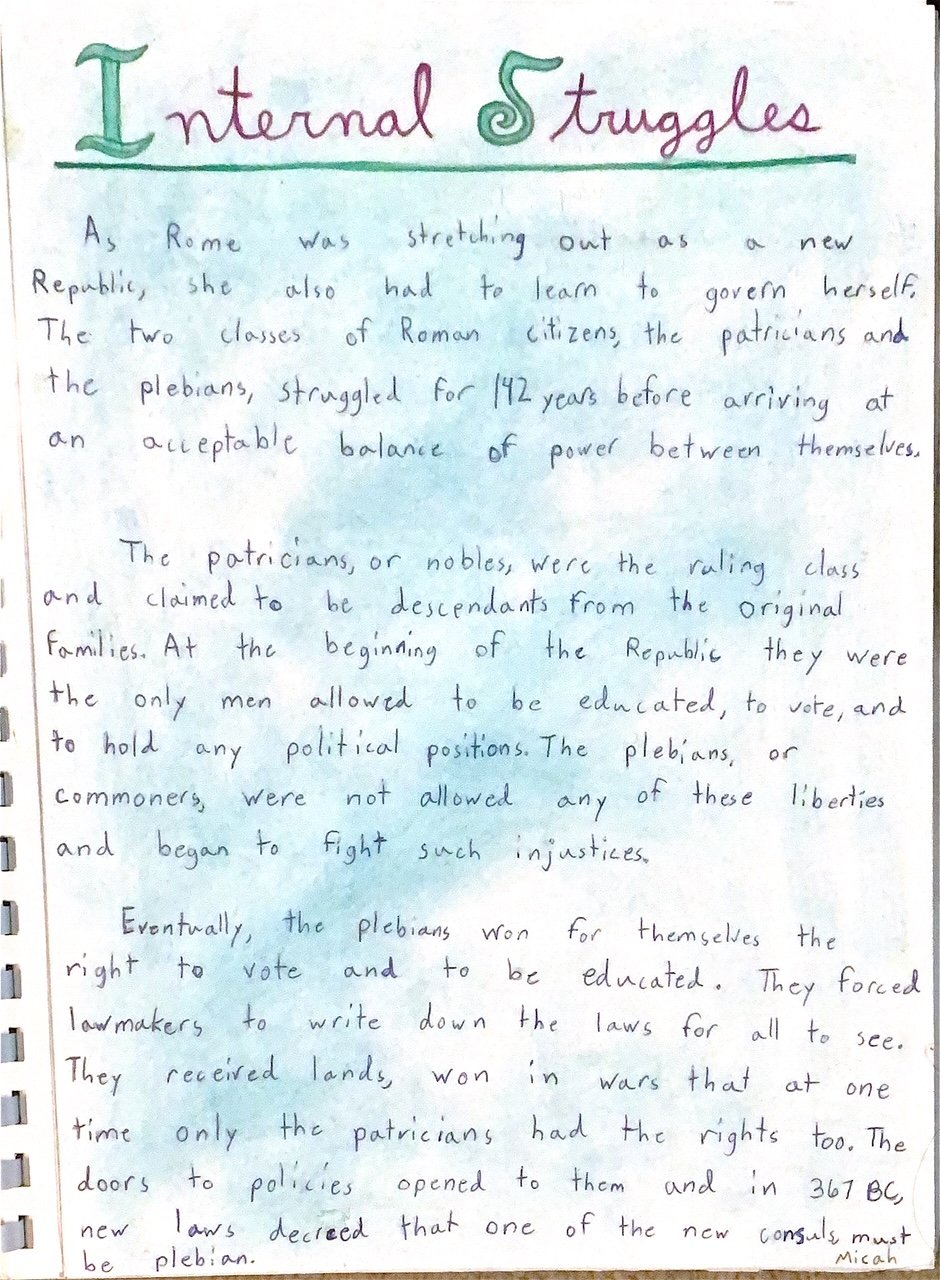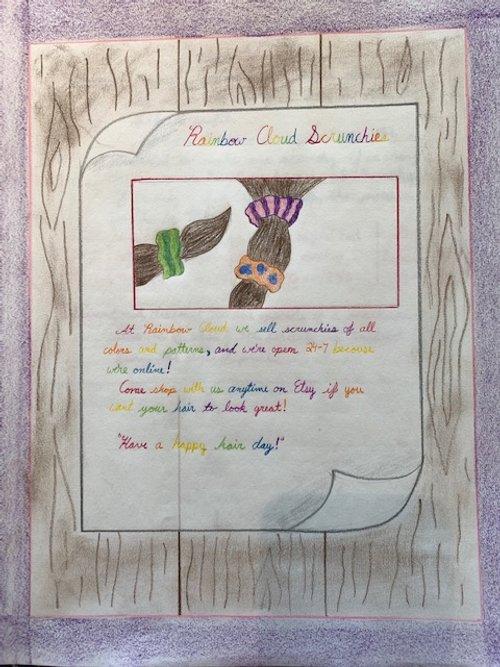Class 6 Main Lesson
in order to begin Class 6 in the fall, the student must have turned 11 by May 1st of that year.
Our Class 6 class size is 14 students, allowing the teacher to get to know each student and to foster a school-family environment for the class.
Students in Class 6 begin to show signs of cognitive growth, moving from thinking in the picture building way of the early classes to the logical thinking of the adult.
To learn more about the Sixth Grader and the Twelve-Year Change, please read our blog post on this topic.
History & Geography
In history, Class 6 students start with the founding of Rome through the legends, the monarchy, republic, and empire. History studies continue with the life of Christ, the Crusades, the life of Muhammed and the contributions of the Islamic people, and finally, medieval society is studied through historical figures such as Joan of Arc and Saladin.
At Lotus & Ivy, rites of passage for children are important to help them feel supported and confident in their transformative journey through childhood to adolescence and then into adulthood. Rites of passage provide support for them and can serve as a small voice within them saying, “You are ready.”
Some child development experts worry about the fading out of rites of passage from modern society. Waldorf schools have done a wonderful job over the last century of providing these rites of passage moments and ceremonies for students. From the Class 1 Rainbow Bridge ceremony to the Class 6 Knighting Ceremony to the Class 8 Maypole Dance and many moments in between, the students feel at each milestone that they are transforming as a person. They are becoming their own person, paving their own path, and they are lovingly supported by their family and their community every step of the way.
Lotus & Ivy 6th Grade Main Lesson students are embarking on a study of Medieval History, which involves activities like creating illuminated letters and crafting heraldry shields. Students will progress from being pages to squires, with the opportunity to be knighted in a special ceremony.
The process of becoming a squire and then a knight includes setting and achieving goals related to service, integrity, courage, and courtesy over four to six weeks. Parents are encouraged to help identify suitable challenges for their child, such as completing chores, homework, or engaging in community service. The history lesson provides context on the roles of pages, squires, and knights in Medieval society, emphasizing the rigorous training and expectations associated with each stage.
Geography for Class 6 covers Central and South America, the cultures, geographical terminology, and major landmarks.
Science
Formal science lessons continue in Class 6 with Astronomy I, Geology & Mineralogy, and Physics I. Science lessons are based on the method of phenomenological science practiced in many Waldorf schools where students experience the phenomenon before explanations are given. This method develops critical thinking and allows meaningful questions to form inside the student before answers are given. Hands-on components and experiments are key to our science curriculum. In Astronomy I, we begin to find our bearings in the night sky by learning the constellations and the stories behind their names, terminology, and history, laying the foundations for Astronomy II in Class 7. In Geology & Mineralogy, we study the rock cycle, types of rocks and minerals, Moh’s Hardness Scale, volcanoes, glaciers, and more. In Physics I, students study acoustics, optics, light & color, and the basics of thermodynamics.
Math
The Class 6 Math Main Lessons are Geometry II and Business Math. In Geometry II, we progress from Class 5’s Geometry I with more advanced constructions and geometric drawings. Geometric progressions and The Spiral of Archimedes are wonderful hands-on lessons for the students. Angle measures, circle terminology and study, and polygon terminology are all studied with artistic components.
In Business Math, students continue to build on decimals from Class 5, while applying them to practical life through business math. Percentages, interest, taxes, discount price, rate of pay, and unit cost are all introduced as students learn to apply the basic processes to practical situations. Business Math is both challenging and exciting for the students as they work on project work and create ideas for their own business.
For a complete math curriculum, Lotus & Ivy recommends students register for Class 6 Complete Year Math Class, which meets two or three times a week (2 class options), in addition to the Main Lesson Classes, and provides a complete year math curriculum covering topics including exponents and roots, divisibility, prime factorization, temperature conversion formulas, business formulas, line graphs and pie charts, statistics, introduction to ratios, currency exchange rates, and much more.
Language Arts
Literature in Class 6 is centered on stories from history, Arthurian legends, and poetry. Grammar and spelling practice are incorporated into every Main Lesson as part of the morning warm-up, and composition is part of every Main Lesson block whether it be through essay-writing, paragraph writing, creative writing, journaling, or lab reports.
EXPECTATIONS
Our teachers send home assignments for the week for students to work on outside of class time. Class 6 students can expect to spend 2-4 hours outside of class time on assignments each week.
Our classes are recorded and can be watched later for students who miss a class. The recordings are not sold or shared with anyone outside of the class.
Complete Curriculum
Lotus & Ivy’s main lessons and homework, if completed, fulfill a complete year homeschool requirement for language arts, science, and social studies. For a complete math curriculum, we recommend that families supplement with additional math practice at least three times a week. Lotus & Ivy offers additional math classes to meet this requirement. For more information about our Class 6 math class, click here.
If you are looking for a comprehensive wholistic program, Lotus & Ivy offers Complement Classes in addition to our Main Lesson and Complete Year Math Classes. Our Complements are four rotations of Spanish, German, flute & recorder, and handwork. Students meet twice a week with their teacher for these classes in addition to Main Lesson and Complete Year Math.
Students may enroll in Lotus & Ivy Main Lesson Classes, Complete Year Math Classes, Language Arts Class, or Complement Classes or any combination of the 3. Students may enroll in Lotus & Ivy Main Lesson Classes, Expanded Curriculum Classes, or Complement Classes or any combination of the three. Lotus & Ivy recommends that students take all three offerings for the most comprehensive experience, providing hands-on and experiential learning at its best.
SCREEN TIME: HARMFUL OR HEALTHY?
We have carefully considered screen time for all of our classes to ensure the screen time is interactive, not passive or one-sided. Our teachers, along with other health & education experts, have for many years encouraged parents to avoid screens for children because, when the screen time is one-sided, like with television and video games, it is harmful to the child’s brain. Live and interactive online classes make good use of technology and allow us to bring this whole-child education to a much larger audience by ensuring that screen time is two-sided and teachers may respond in real-time to the child.
COGNITIVE FOUNDATION
True to our curriculum, our classes provide plenty of opportunities for artistic and creative work.
According to an article published by the Waldorf Research Institute entitled Waldorf Education is Developmentally Appropriate – What Exactly Does this Mean?, “recent MRI equipment has illuminated the fact that in young children, artistic work, full body playing, and sensory stimulation all light up the whole brain. Focused academic work, on the other hand, only lights up small parts of the brain. That ‘lighting’ up points to the development of neurons, making the child’s brain replete with neurons which end up looking, at their best, like a gorgeous, mature tree crown. Once myelinated, these neurons communicate for clear thinking, flexible problem solving, executive function, and creativity.” (https://www.waldorflibrary.org/articles/1249-waldorf-education-is-developmentally-appropriate-what-exactly-does-this-mean)








